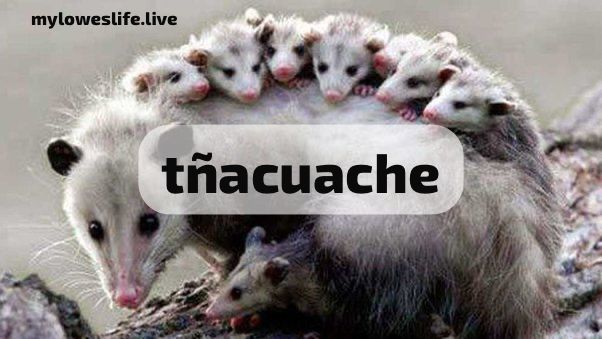
The tñacuache, often referred to as the Virginia opossum, is a remarkable creature that captures the interest of both wildlife enthusiasts and casual observers alike. With its unique adaptations and intriguing behaviors, Exploring the Fascinating World of the Tñacuache: Nature’s Unique Opossum.The tñacuache, often referred to as the Virginia opossum, is a remarkable creature that captures the interest of both wildlife enthusiasts and casual observers alike. With its unique adaptations and intriguing behaviors, the tñacuache offers a fascinating glimpse into the complexities of nature. In this article, we will delve into various aspects of the tñacuache, exploring its habitat, diet, behavior, and ecological significance.
The Tñacuache: An Overview
What is the Tñacuache?
The tñacuache (Didelphis virginiana) is a marsupial native to North America. Known for its distinctive appearance, the tñacuache has a long, hairless tail, a pointed snout, and large, expressive eyes. Its fur is typically grayish-white, which helps it blend into its surroundings. As the only marsupial found in the United States and Canada, the tñacuache plays a unique role in its ecosystem.
Habitat and Distribution of the Tñacuache
The tñacuache is highly adaptable and can be found in a variety of habitats, including forests, urban areas, and wetlands. It thrives in environments with ample food sources and shelter. This adaptability has allowed the tñacuache to expand its range across the continent, making it a common sight in both rural and urban settings.
Urban Adaptation
One of the most fascinating aspects of the tñacuache is its ability to thrive in urban environments. As cities expand and natural habitats diminish, the tñacuache has learned to navigate human-made landscapes. This adaptability allows it to find food in garbage cans, gardens, and parks. The presence of tñacuaches in urban areas serves as a reminder of the resilience of wildlife amidst human encroachment.
The Ecological Role of the Tñacuache
Importance in the Ecosystem
The tñacuache plays a crucial role in its ecosystem,tñacuache contributing to the balance of nature in several ways. As omnivores, tñacuaches have a diverse diet that includes insects, fruits, small animals, and even carrion. This dietary flexibility enables them to thrive in various environments and helps control pest populations. By consuming pests and decaying matter, tñacuaches contribute to the health of their ecosystems.
Tñacuache and Pest Control
One of the key ecological benefits of the tñacuache is its role in pest control. These animals consume large quantities of ticks, insects, and other pests, making them valuable allies for both humans and the environment. Research has shown that a single tñacuache can eat thousands of ticks in a week, significantly reducing the risk of tick-borne diseases in their habitats.
Behavior and Social Structure of the Tñacuache
Social Behavior and Solitary Nature
Tñacuaches are primarily solitary animals. They are nocturnal, meaning they are most active at night, which allows them to avoid many predators. While they do not form complex social structures, they are known to communicate with each other through various vocalizations and body language.
Defense Mechanisms
When threatened, the tñacuache employs several fascinating defense mechanisms. One of its most famous behaviors is “playing dead” or “playing possum.” When confronted by a predator, the tñacuache can mimic the appearance of a sick or dead animal tñacuache . This behavior confuses predators, allowing the tñacuache to escape unharmed. Additionally, tñacuaches have a strong immune system that allows them to survive bites from venomous snakes, making them unique among mammals.
Breeding and Reproduction
The breeding season for tñacuaches typically occurs in the spring. After a gestation period of about 12 days, the female gives birth to a litter of tiny, underdeveloped young. The young tñacuaches then crawl into their mother’s pouch, where they continue to develop and nurse for several weeks. As they grow, they begin to explore their surroundings while still relying on their mother for protection and nourishment.
Diet and Foraging Habits of the Tñacuache
What Do Tñacuaches Eat?
Tñacuaches are opportunistic feeders, tñacuache meaning they consume a wide range of foods based on availability. Their diet primarily consists of fruits, insects, small mammals, and carrion. This varied diet allows them to thrive in different environments and adapt to changing food sources throughout the year.
Seasonal Variations in Diet
During the warmer months, tñacuaches tend to consume more fruits and insects, while in the colder months, they may rely more on nuts and carrion. Their ability to adjust their diet based on the seasons showcases their adaptability and resourcefulness.
Foraging Behavior
Tñacuaches are skilled foragers, tñacuache using their keen sense of smell to locate food. They are often seen rummaging through leaf litter, scavenging in gardens, or exploring garbage cans for discarded food. Their dexterous paws allow them to manipulate objects and access a wide variety of food sources.
Conservation Status of the Tñacuache
Threats to the Tñacuache Population
While the tñacuache is currently classified as a species of least concern, it faces several threats in its natural habitat. Urbanization, habitat loss, and road fatalities pose significant risks to their populations. As human development expands, the tñacuache’s natural habitats are increasingly fragmented, limiting their access to food and shelter.
Conservation Efforts
Fortunately, conservation efforts are underway to protect the tñacuache and its habitat. Public awareness campaigns educate communities about the ecological benefits of tñacuaches, promoting coexistence rather than fear. Wildlife corridors and green spaces are being developed to provide safe passages for tñacuaches and other wildlife in urban areas.
The Tñacuache in Culture and Folklore
Cultural Significance
The tñacuache has a notable place in various cultures and folklore. In some regions, it is viewed as a symbol of resilience and adaptability. Folklore often depicts the tñacuache as clever and resourceful, traits that reflect its ability to thrive in challenging environments.
Tñacuache in Literature and Media
The tñacuache has also made appearances in literature, tñacuache cartoons, and films, often portrayed as a comical character. These representations can shape public perception, highlighting the importance of understanding and appreciating this unique animal.
Education and Awareness
Increasing awareness about the tñacuache’s ecological role can help foster a greater appreciation for this often-overlooked species. Educational programs in schools and communities can teach individuals about the importance of biodiversity and the need to protect habitats.
Fun Facts About the Tñacuache
- Unique Adaptations: The tñacuache is the only marsupial found in North America, showcasing its unique evolutionary adaptations.
- Immunity to Venom: Tñacuaches have a natural immunity to certain venoms, allowing them to survive bites from snakes like rattlesnakes.
- Playing Dead: Their ability to “play dead” is a fascinating defense mechanism that has been documented in various studies.
- Strong Immune System: Tñacuaches are remarkably resilient and can survive in environments where many other mammals would struggle.
- Scavenging Experts: Their scavenging behavior plays a crucial role in their ecosystems, helping to keep environments clean and healthy.
Conclusion
In conclusion, the tñacuache is a remarkable creature that embodies resilience, adaptability, and ecological significance. By exploring the fascinating world of the tñacuache, we gain a deeper appreciation for its role in our ecosystems and the natural world. tñacuache Understanding its behaviors, diet, and habitat helps us recognize the importance of conserving this unique marsupial. As we continue to learn about and protect the tñacuache, we ensure that future generations can also marvel at the wonders of nature.





